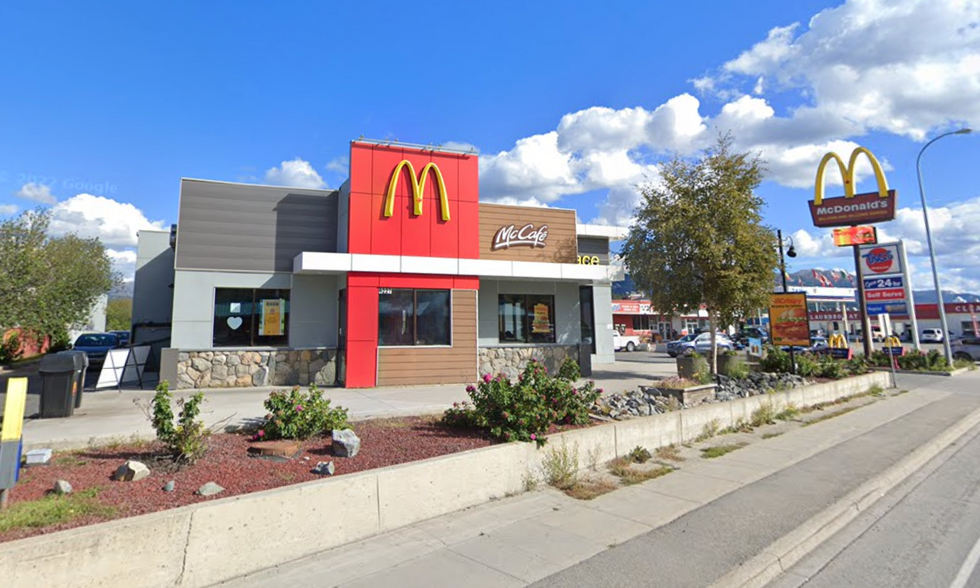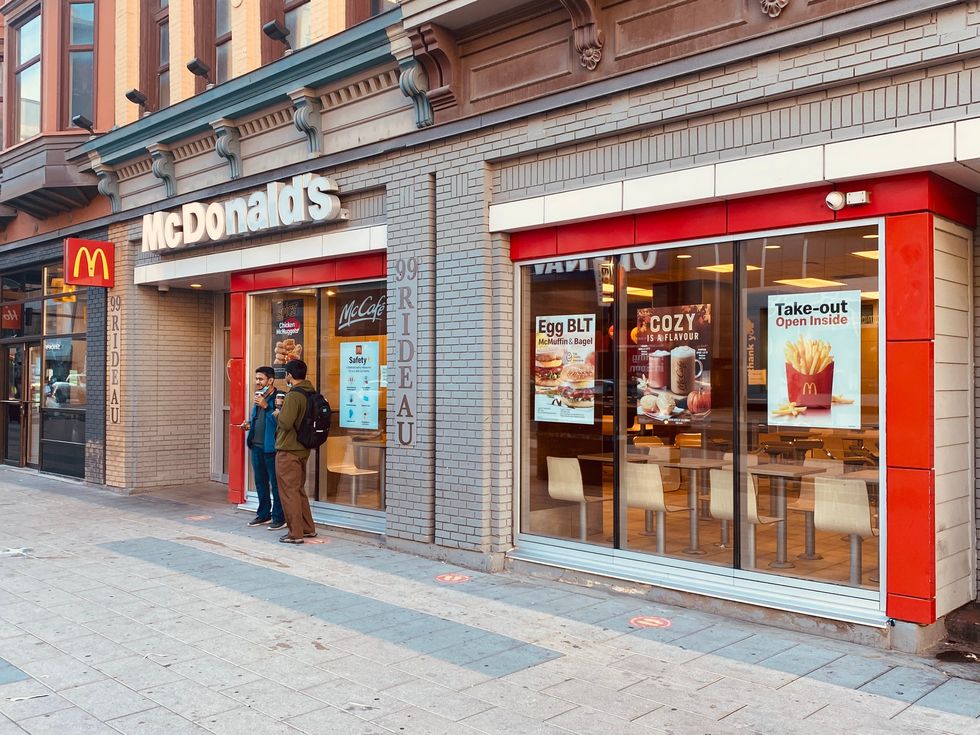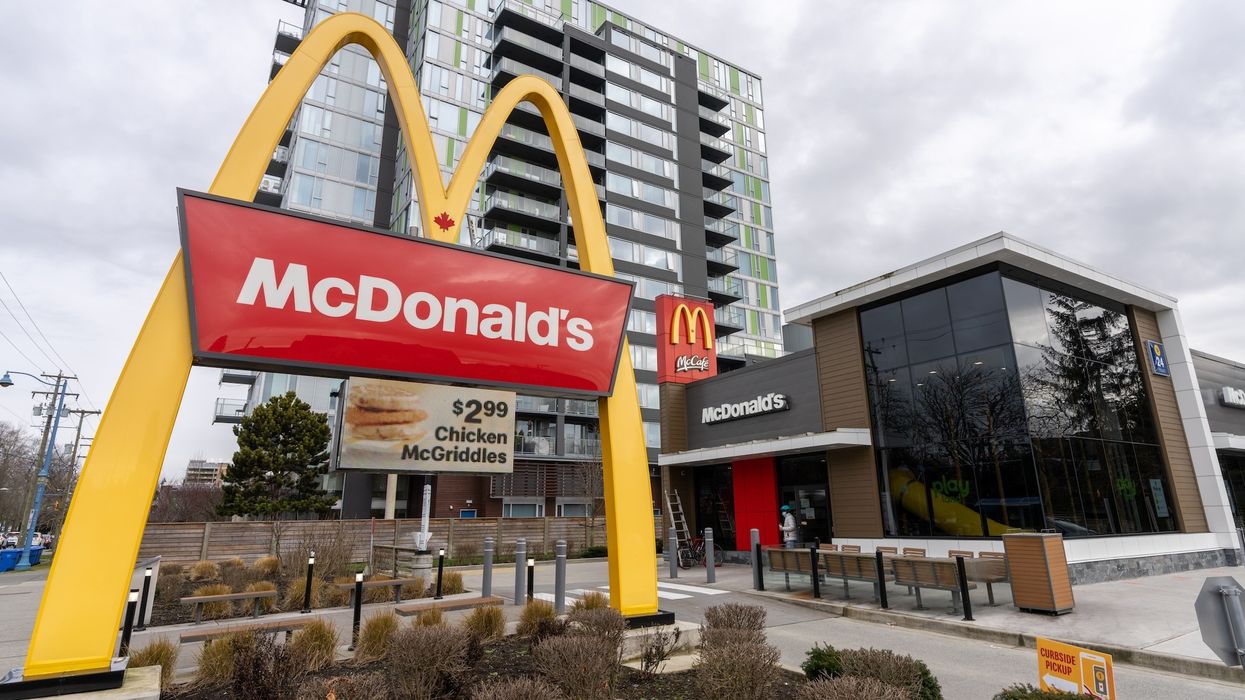Love it (shamelessly) or hate it, McDonald’s is one of the most recognizable brands in the world. Not only is the burger brand famously known for its consistent and comforting offerings, it’s also a massive global real estate company. Of course, Canada is no exception.
Front and centre to the widespread growth of the chain across the country was the celebrated McDonald’s Canada founder George Cohon, who passed away last week at the age of 86. The Chicago-born businessman served in the U.S. Air Force and was practicing law when he crossed paths with McDonald’s owner Ray Kroc in the late '60s, who offered Cohon the opportunity to expand the beloved American fast food chain in Canada.
In 1967, Kroc opened a McDonald’s in Richmond, B.C – the first location outside of the United States – but the brand was still largely unknown in Canada. The following year, Cohon bought a franchise agreement covering Eastern Canada and opened a location in London, Ontario. It wasn’t long before he founded McDonald’s Restaurants of Canada.
“We didn’t know a soul, we didn’t have much money and McDonald’s then was far from being the household word it is today,” Cohon wrote in his best-selling autobiography To Russia with Fries (Cohon would later go on to famously bring the brand into the then-Soviet Union).
From its arrival in London, the brand rapidly expanded. This included the first Toronto location, which opened up shop in North York (Keele Street, just south of Finch Avenue) in May 1969.
By 1970, the chain had grown to 50 Canadian locations, with the addition of a restaurant in Dieppe, New Brunswick. In 1971, McDonald’s reacquired Cohon’s licence and he became the Chairman, President, and CEO of McDonald’s Canada. Within the next decade, those 50 locations had grown to hundreds. In 1977, with the opening of the 250th restaurant in St. John’s, Newfoundland, the burger brand was officially operating from coast to coast in Canada.
By 1981, McDonald’s had grown to become Canada’s largest food service organization and a country-wide household name. By 1992, when Cohon stepped down from running the brand’s daily operations, there were more than 1,000 locations across Canada. Two years later, a deal was signed between Wal-Mart Canada and McDonald’s to open smaller satellite restaurants in the big-box retailer to serve hungry shoppers.
Over the decades, it’s safe to say that Cohon built a legacy that stood the test of time. In business talks and interviews, he outlined a formula that was strict, straightforward, and somewhat simple: Quality, service, cleanliness, and value. Of course, McDonald’s is also known for its consistency in the taste department, with customers knowing exactly what they were going to get, whether they were in small-town Ontario or Tokyo.
Across the country, McDonald’s Canada now features about 1,400 locations and serves some 2.5 million people daily. The famous golden arches are even found in the territory capitals of Yellowknife and Whitehorse, however, Nunavut is currently without any McDonald’s. Today, over 85% of Canadian McDonald’s restaurants are locally owned and operated by independent entrepreneurs. This model has allowed the rapid widespread growth of the brand without the need for significant capital expenditure.

So, although most of us views McDonald’s as a fast food chain, it’s also a very successful real estate company – one of the world’s largest commercial real estate operators, in fact. The brand either owns or leases the land and building for each franchised location, and each franchisee pays for the décor, seating, signs, and equipment. So, in addition to a percentage of restaurant sales, McDonald’s Corporation’s main revenue stream comes from rents and fees paid by franchise owners. In September, McDonald’s made headlines when it announced it would take a larger cut of sales from some of its Canadian franchisees, bumping fees on sales from 4% to 5%. This hike will apply to those who open new locations and those who buy locations previously operated by McDonald’s.
While Canada’s McDonald’s restaurants may be united in the consistency of their product, the fast food spot’s locations can vary widely throughout the country in scope and size. Not all provinces have the same access, either. According to May 2023 numbers, Ontario dominates the McDonald’s location count, with some 514 locations. The largest of these — a nearly 9,000-sq.-ft restaurant — sits on Yonge Street, just north of the forever flashy tourist hotspot Yonge-Dundas Square. Quebec takes the second place spot, with 323 McDonald’s locations, but it's home to the company's largest location in Canada: a 12,000-sq.-ft store in La Porte du Nord. Meanwhile, Alberta houses the third highest number of restaurants, with 201 locations.
In addition to the traditional standalone restaurants, a growing number of McCafé locations – a coffee-house-style food and beverage chain with all-day breakfast items, owned by McDonald's – have sprung up. Canada’s first standalone McCafé location opened up shop in Toronto’s Union Station in 2015 (there’s now also a McDonald’s in a newer food court just downstairs). Although it began as a pilot project, the McCafé concept quickly caught on. This past summer, McDonald’s opened its first standalone McCafé in an airport, when a location opened up shop at Montreal Pierre-Elliot-Trudeau International Airport. It also marked the first standalone café location in Quebec.
In other McDonald’s news, last month, a brand-new McDonald’s location seemingly in the middle of nowhere in Saint-François, Laval, Quebec (8075 Avenue Marcel-Villeneuve) went viral on TikTok when a user discovered that the rural location was not running on electricity, rather, a generator. On the topic of real estate, TikTok users weighed in, questioning whether the bigwigs at McDonald’s knew something we didn’t in terms of potential future developments surrounding the now-remote location.
While new McDonald’s locations continue to emerge, others are closing their doors. For example, “The World’s Worst McDonalds,” an infamous spot located on downtown Ottawa’s Rideau Street that operated since 1985, shut its doors this past April after its lease expired. This came after years of making a name for itself among the tens of thousands of McDonald’s locations globally for the violence, debauchery, and even raccoon fights that characterized the location. Many pointed to factors like homelessness and drug addiction as the main causes.

Some locations are closing their doors to make way for changing times. In Toronto’s family-filled Leaside neighbourhood, a long-time beloved McDonald’s location at Eglinton and Bayview Avenues was shuttered in 2016 to make way for a stop on the (hopefully) upcoming Eglinton Crosstown LRT. In Toronto, a handful of McDonald’s locations have closed to make way for condos. This includes a long-time location at King and Dufferin Streets in 2020 and – just up the road – the closure of a 1978-opened location at King and Dupont Streets in late 2021. In Vancouver last month, McDonald’s Canada sold its iconic 1972-built location next to the Main Street SkyTrain to developers to create a mixed-use development with rental housing.
Despite the closing of these long-time family go-to spots, McDonald’s Canada is in good shape (and the pandemic-inspired take-off of food delivery apps doesn’t hurt). In its most recent Q3 financial report, McDonald corporation outlines a systemwide sales growth of 11%, stating that segment performance was driven by strong comparable sales in most markets, led by the U.K., Germany, and Canada.
Although Canada may admittedly lack conversation-starting creative design when it comes to its McDonald’s locations – compared to a restaurant in New Zealand that features a decommissioned airplane as part of its layout, a massive storefront-sized Happy Meal in Texas, or a UFO-shaped spot in New Mexico – the brand remains a consistent staple for Canadians of all ages (and, now, dietary restrictions).
While Tim Horton’s holds the title of Canada’s largest fast food chain, with 4,268 locations, McDonald’s famous golden arches continue to dot both urban and rural landscapes from coast to coast, offering an appreciated and familiar sight.
Of course, it was Cohon who kickstarted this in Canada, making a name for himself in the process – whether for his charitable work, which included bringing the Ronald McDonald House Charities to Canada, and famously saving Toronto’s Santa Claus Parade in 1982 when a lead sponsor pulled out.
Rolling in circles with Canada’s biggest business figures and politicians, Cohon became a Canadian citizen in 1973 and was honoured as a member of the Order of Canada in 1988. He served as President and CEO of McDonald’s Canada for decades and will be remembered for both his business savviness and his perpetual efforts to give back.





















